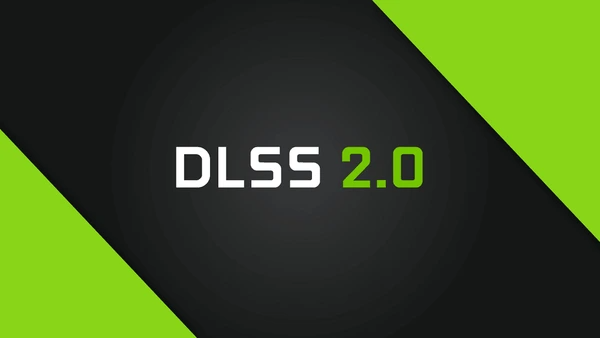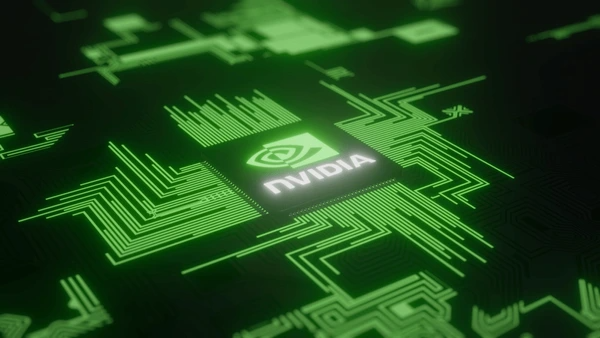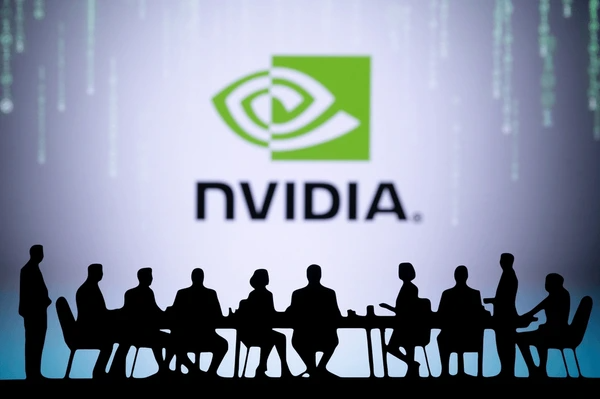
What Is DLSS?
DLSS is an AI rendering technology developed by NVIDIA that uses deep learning to upscale lower-resolution images to higher resolutions with improved visual quality and performance. It leverages dedicated AI processors (Tensor Cores) on NVIDIA’s RTX GPUs to perform real-time image reconstruction and enhancement.

How DLSS Works
DLSS works by rendering a game at a lower resolution, then using a deep neural network to upscale the image to a higher resolution while reconstructing details and reducing aliasing artifacts. The key steps are:
- Render the game at a lower internal resolution (e.g., 1080p)
- Use a deep learning model to analyze the low-res frame and corresponding motion vectors
- Reconstruct and upscale the frame to the desired higher resolution (e.g., 4K) with improved detail and anti-aliasing
Key Features of DLSS
1. Performance Boost DLSS can significantly boost frame rates in games, with performance gains ranging from 30% to 70% 125. By rendering games at lower resolutions and then intelligently upscaling the output, DLSS reduces the computational load on the GPU, allowing for higher frame rates without compromising visual quality.
2. Visual Quality Enhancement Despite rendering at lower resolutions, DLSS can produce visuals comparable to or even better than native high-resolution rendering. The deep learning model is trained on high-quality samples, enabling it to reconstruct details and textures that would typically be lost during traditional upscaling methods.
3. Temporal Stability DLSS incorporates temporal data, such as motion vectors and previous frames, to ensure temporal stability and reduce artifacts like flickering or ghosting. This results in a smooth and consistent visual experience, even in high-motion scenes.
4. Customizable Performance Modes NVIDIA offers different DLSS modes (Quality, Balanced, and Performance) to cater to individual preferences. The Quality mode prioritizes visual fidelity, while the Performance mode maximizes frame rates at the cost of some image quality degradation.
5. Compatibility and Integration DLSS is compatible with a wide range of games and game engines, thanks to NVIDIA’s collaboration with developers. Game developers can integrate DLSS into their titles, allowing gamers to benefit from improved performance and visuals without additional effort.

Benefits of DLSS
- Boosting Frame Rates: DLSS can provide substantial performance gains, allowing games to run at higher frame rates without sacrificing visual quality. According to Nvidia, DLSS can deliver up to a 70% performance improvement in certain scenarios, enabling smoother gameplay and a more responsive experience.
- High-Resolution Rendering: DLSS leverages deep learning to upscale lower-resolution images to higher resolutions, such as 4K, while maintaining excellent image quality. This allows games to render at lower resolutions for improved performance, and then intelligently reconstruct the final output at a higher resolution, providing a visually stunning experience without the traditional performance hit.
- Improved Visual Quality: In addition to enabling higher resolutions, DLSS can also enhance image quality by reducing aliasing and sharpening details. This results in cleaner, crisper visuals compared to traditional upscaling or anti-aliasing techniques.
Challenges of DLSS
- Hardware Requirements: DLSS is currently exclusive to Nvidia’s RTX GPUs, as it relies on the dedicated Tensor Cores for AI processing. This limits its availability to a subset of gaming systems.
- Training Overhead: DLSS requires extensive training on a vast dataset of high-resolution and low-resolution image pairs to achieve optimal performance. This training process is computationally intensive and time-consuming, necessitating periodic updates from Nvidia.
- Performance Variability: The performance gains and visual quality improvements provided by DLSS can vary depending on the game engine, rendering techniques, and specific hardware configurations.
- Compatibility and Integration: Integrating DLSS into game engines and ensuring compatibility across different hardware and software configurations can be challenging for developers, potentially limiting its widespread adoption.
DLSS vs Other Upscaling Techniques
Underlying Approach
DLSS (Deep Learning Super Sampling) is an AI-based upscaling technique that utilizes deep learning to reconstruct high-resolution images from lower-resolution inputs. In contrast, traditional upscaling methods like bilinear or bicubic interpolation rely on mathematical algorithms to interpolate new pixels, often resulting in blurry or aliased outputs.
Quality and Performance
DLSS leverages the computational power of dedicated AI hardware (Tensor Cores) to deliver superior image quality compared to traditional upscalers, with better preservation of fine details and textures. However, it requires compatible hardware and can be more computationally intensive. Traditional upscalers are generally faster but sacrifice image quality.
Training and Optimization
DLSS is trained on a vast dataset of high-resolution images and their corresponding low-resolution counterparts, allowing the neural network to learn how to reconstruct intricate details. This training process is resource-intensive but enables DLSS to outperform traditional methods in terms of output quality. Traditional upscalers, on the other hand, are not trained and rely solely on their mathematical algorithms.
Artifacts and Limitations
While DLSS can produce sharper and more detailed images, it may introduce unique artifacts like shimmering or haloing in certain scenarios. Traditional upscalers are prone to blurring, aliasing, and ringing artifacts, especially around edges. DLSS also requires compatible hardware and game/application integration, limiting its availability.
Applications of DLSS
Virtual Production and Filmmaking
DLSS enables significant performance gains for real-time rendering, allowing for higher frame rates and improved visual fidelity in virtual production workflows. Studios like NSYNK and HYPERBOWL have integrated DLSS, nearly doubling frame rates with real-time ray tracing effects. This empowers rapid iteration and continuous content production for films, TV shows, and YouTube videos.
Architectural Visualization and Product Design
DLSS boosts performance for demanding real-time rendering tasks in architectural visualization and product design. Companies like Hyundai Motors leverage DLSS to achieve their creative visions, enabling high-fidelity visuals while maintaining interactive frame rates.
Animation and Visual Effects
Leading visual effects companies like Industrial Light & Magic (ILM) utilize DLSS to accelerate rendering performance for animation and visual effects workflows. DLSS allows for higher resolutions and improved anti-aliasing compared to traditional techniques.
Simulation and Data Generation
DLSS can be applied to accelerate computationally intensive simulations and data generation tasks, enabling higher resolutions and faster iteration times. This can benefit various industries, including scientific research, engineering, and autonomous vehicle development.
Application Cases
| Product/Project | Technical Outcomes | Application Scenarios |
|---|---|---|
| DLSS (Deep Learning Super Sampling) NVIDIA | Uses AI rendering to boost frame rates and generate beautiful, crisp game images. Provides up to 2X performance boost with similar image quality as native rendering. | Graphics-intensive gaming, virtual production, architectural visualization, animation, and visual effects. |
| RTX GPUs with Tensor Cores NVIDIA | Dedicated AI processors enable real-time ray tracing and advanced graphics rendering using DLSS technology. | High-end gaming PCs, workstations for content creation, and AI-accelerated graphics rendering. |
| Omniverse NVIDIA | Leverages DLSS and RTX technology for real-time photorealistic simulation and collaboration across industries. | Virtual production, product design, architectural visualization, and industrial digital twins. |

Latest Technical Innovations in DLSS
AI-Powered Upscaling Algorithms
The core of DLSS lies in its advanced AI algorithms that can upscale lower-resolution images to higher resolutions while preserving detail and visual quality. Recent advancements have focused on improving the accuracy and efficiency of these algorithms, leveraging techniques like:
- Convolutional Neural Networks (CNNs) for image reconstruction and super-resolution
- Generative Adversarial Networks (GANs) for realistic texture synthesis
- Temporal anti-aliasing for improved frame interpolation
Hardware Acceleration
NVIDIA’s Tensor Cores, specialized AI processors integrated into their RTX GPUs, play a crucial role in enabling real-time DLSS performance. Recent innovations include:
- Optimized data paths and instruction sets for efficient tensor operations
- Dedicated hardware units for AI inference acceleration
- Improved caching and memory management for reduced latency
Integration with Rendering Pipelines
To seamlessly integrate DLSS into existing rendering workflows, advancements have been made in:
- Intelligent frame sampling and reconstruction techniques
- Dynamic resolution scaling based on scene complexity
- Improved temporal stability and ghosting reduction
Training Data and Model Optimization
The performance of DLSS heavily relies on the quality of its training data and model optimization strategies. Recent innovations include:
- Capturing high-quality ground truth data for diverse scenarios
- Transfer learning and domain adaptation for improved generalization
- Model pruning and quantization for reduced memory footprint
FAQs
- What is DLSS, and how does it work?
DLSS uses AI to upscale lower-resolution frames to higher resolutions, enhancing graphics and improving performance. - Does DLSS reduce image quality?
No, DLSS often improves image quality by intelligently reconstructing details lost during rendering. - How does DLSS compare to FSR?
DLSS leverages AI and hardware-accelerated Tensor Cores for superior upscaling, while FSR is a software-based alternative compatible with more GPUs. - Which games support DLSS?
Popular titles like Cyberpunk 2077, Control, and Battlefield 2042 support DLSS, with more being added regularly. - What hardware is required for DLSS?
DLSS requires an NVIDIA RTX GPU with Tensor Cores, available in the RTX 20-series, 30-series, and newer GPUs.
To get detailed scientific explanations of DLSS, try Patsnap Eureka.

